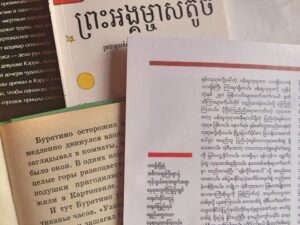
4 POWERFUL TIPS TO LEARN A NEW WRITING SYSTEM
Japanese, Hebrew or Greek? A new writing system
Learning a new language is always an adventure; a very pleasant one as I think even if it’s tough sometimes. We are confronted with new phonemes, we learn new words, new writing and new grammar rules.
When we then learn a language with a different alphabet the learning process turns into a completely new challenge. Those who could already travel to a country with a non Latin alphabet know probably the feeling of being suddenly illiterate.

It always fascinated me the idea of being able to read a different writing system. In my childhood, as at that time already little language nerd I created my own alphabet just for fun.
Not so good for communicating with others since I was the only reader, but a great way for developing creative skills. Later as a teenager I started to learn Japanese and along the years I was engaged with other languages with different writing systems such as Russian, Thai and Burmese.
In the beginning the brain needs a while to “translate” the unusual signs into a meaning, a sound; the more we study the target language the easier it becomes to read the script.
But how to begin?
Which is the best way for practicing a new alphabet? Basically there are two main types of writing systems: those that represents consonants and vowels and those that represents syllables.
Here are some tips for learning and practicing a new alphabet:
1. Transliteration
Transliterate words or a text into your own alphabet, this helps to memorize the single letters or syllables. The most languages have even an official transliteration system.
2. Comparing with familiar letters or symbols
For speakers with a native language using the Latin alphabet learning a language with a writing system that is similar makes possible to combine and compare letters in the two alphabets in order to learn and memorize it better. For example the English “G” and the Russian / Cyrillic “Г” . Or the Latin “b” and the Greek “β” .
If the alphabet you are learning is completely different from the one in your native language so you can try to associate the letters / syllables with familiar objects. For ex. in Japanese the kanji for tree –木– , which reminds on a tree, or the Thai “ง“ that looks like a snake (coincidentally the Thai word for snake is written with this letter)
Related: How to become fluent learning not more than 20 minutes a day
3. Practice writing and reading
Sounds obvious but it is essential! For example calligraphy notebooks that children use for alphabetization are a great help to practice writing. Also children’s books which are very simply made, with texts that are easy to read and with many exercises and repetitions.
In many writing systems the sequence to write the lines and strokes is important, the repetition makes easier to hold and remember which is the right sequence.
Our brain does not read words letter by letter but the complete word at once. For this reason, if we keep the first and the last letter from a word but change the position of the letters in the middle we will still be able to read the word. The same happens when we learn a new alphabet, according to my experience.
4. Apps, internet
In times of smartphones there are several apps for language learning and also specifically for learning / practicing alphabets. They can be very helpful and it is possible to find for several languages. I found apps for practicing even Burmese, which is not among one the most learned languages. For Japanese, Mandarin, Russian there are tones of useful resources.
Some of them are directed to children who speak the language already as a mother tongue and not for foreigners learning the language but for those who have already a certain understanding level in the target language this kind of app can be very helpful. And of course there are innumerable websites on the internet.
When we then start being able to read single words, sentences and even small texts in the target language is a great sense of achievement 🙂
So, search and try the best methods for you to learn, practice and read a lot and good luck in learning!






